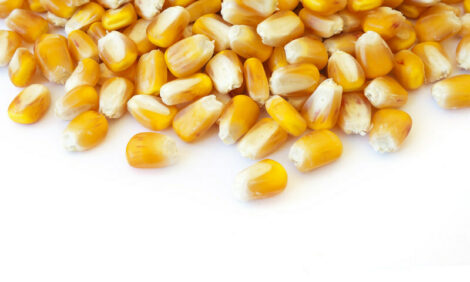



UK/EU Pig Market Update - September 2003
By the UK's Meat and Livestock Commission - This MLC report looks at the current market situation in the UK and reviews recent price trends and markets throughout Europe.Producer Prices

United Kingdom producer prices reached their seasonal low point in early September, and have since shown some small increases. The UK Eurospec price in the week ended 20 September was 98p/kg dw, 2p higher than at the end of August and 10p up on a year earlier
|
Seasonality of GB Pig Prices

|
UK market prices in the first half of this year generally benefited from a combination of lower throughputs at abattoirs and from the weaker sterling exchange rate relative to the Euro. Both these factors are still relevant, but prices fell sharply in July and August due to two other factors:
- Extended periods of very hot weather, which had an adverse impact on demand for fresh pork.
- The developing premium of British prices over Continental EU prices (particularly Danish and Dutch prices), which encouraged usage of imported pig meat.
Acute shortages of weaner supplies, resulting from breeding herd contraction and problems with sow infertility, meant that prices strengthened considerably during the first few months of 2003. Between April and June the market was fairly stable, at £37-£39 a head, but prices subsequently fell sharply, in line with the weaker finished pig market. The average price of 30kg weaners in late August , at £32 a head, was £6 down on two months earlier. Prices hardened a little during September, and at the end of the month averaged just under £34.
Reduced sow supplies, particularly from April onwards, and the impact of a weaker sterling have also led to a generally firmer cull sow market this year. Sow prices averaged around 55p/kg dw in April and the first half of May, but they fell back 3-4p in the second half of May amid reports of Germany being swamped with cull sows from Poland. Cull sow prices generally fluctuated within the 49-53p range between May and mid-September. However prices strengthened in the second half of September, ending the month at around 59p/kg.
|
Comparison of UK and EU Pigmeat Reference Prices (a)

(a) Price based on EU dressing specification adjusted to cold carcase weight. These are gross prices before deductions for transport, etc. MLC estimates that the typical deduction in the UK is 4.5p/kg compared with an EU average of 2.6p.
|
The average EU price, which had been fairly steady in August, strengthened considerably during September. Supply shortages in France and Germany were driving factors. In sterling terms, prices have moved above the 100p/kg level for the first time in two years. The EU Reference Price in the week ended 21 September averaged 101p, seven per cent more than a month earlier. Spanish prices fell by seven per cent over the month but most other major producers recorded increases. Prices increased by 14 per cent in Denmark, (after a period of very poor prices, 13 per cent in France and the Netherlands and nine per cent in Germany. The increase in Dutch prices during September bought prices to within 2p of the UK prices at the end of the month, which contrasts with the position in May when the UK price was 32p higher.

With prices much steadier in the UK than in most other EU member states, the UK premium over the average EU price disappeared during September. This is the first time that the UK price has been below the average EU price (other than in 2001, when there was an FMD-related ban on UK exports) since 1999.
Slaughterings
Clean pig slaughter levels have been well below corresponding 2002 levels since January. This has arisen in part from a lower breeding herd but more importantly from poorer sow productivity. Defra slaughtering statistics for August indicate that UK throughputs averaged around 169,000 head while preliminary MLC estimates for August indicate that average weekly throughput increased to around 179,000 head.

Total United Kingdom slaughterings have fallen less markedly than GB slaughterings. This is because of an increase in Northern Ireland, where the breeding herd has been more stable than in Great Britain. Northern Ireland slaughterings have also benefited from some increase in live pig imports from the Irish Republic.
The actual cause of the decline in supplies in Great Britain since the start of the year is unclear. There may well be no single predominant reason, but a number of factors, including:
- Reports of some sporadic increases in PMWS incidence in the early part of 2003.
- Some disruptions to breeding patterns and performance arising from a significant number of producers depopulating and then repopulating last year.
- A developing sow infertility problem since last Autumn, which affected clean pig slaughter levels in the April-June quarter.
|
Estimated GB Sow Productivity Trends (a)

(a) Defined as monthly clean pig slaughter annulaised and divided by estimated breeding herd 7 months earlier. Ratio's are deseasonalised and smoothed. Adjustments made to take account of Swine Fever in 2000 and FMD in 2001
|
The overall impact of these factors on apparent sow productivity (measured by pigs finished per sow per year) has been dramatic. However, GB productivity now appears to have bottomed out, with some small recovery seen since the middle of the year.
Imports
The continued cutbacks in UK production have meant that pork imports have been at record levels this year. In the first half of 2003, pork imports totalled 190,000 tonnes (carcase weight equivalent), around 35 per cent higher than last year. The declines in retail fresh pork purchases suggest that most of this increase was in pig meat for processing in the United Kingdom. However, given the disappearance of the UK price premium, the volume of imports is unlikely to be so high in the second half of the year.
|
Quarterly Pork Imports

|
UK June Pig Survey Results
Revised pig census results for June 2003 have now been published, and are shown in the following table.

(a) Either being suckled, or dry sows being kept for further breeding
|
Although the breeding herd in June 2003 was down 9% on a year earlier, most of this decline occurred last year. June numbers were only 10,000 lower than in December 2002. The sow culling rate in July and August fell to 43% (the long-term average, a figure broadly consistent with a stable breeding herd) for the first time since 1997 – other than for brief periods affected by CSF and FMD. The slow down in sow culling means that the gap between the culling rate and the replacement rate is disappearing. This suggests that breeding herd numbers are stabilising and that the long-term decline in sow numbers is coming to an end.
Consumption
During the latest 4-week period (ended 14 September) the advent of cooler weather began to impact on the pattern of consumer purchases. Purchases of fresh pork and bacon increased compared with the previous period, although they remained down on the year before. Purchases of some processed products, such as ham and sausage rolls, were down slightly - although in general they continued to show good growth rates compared with the year before.
|
Changes in retail purchases and expenditure

Source: Taylor Nelson Sofres
|
In the 12 weeks to 14 September the volume of fresh pork purchases was down six per cent compared with last year although, due to higher prices, the value of expenditure was unchanged. Bacon purchases have been more stable, with a decline of six per cent in the 12-week period. Volume purchases of most processed products were higher. Ham purchases were up five per cent and pork sausages eight per cent.
Source: MLC - 30th September 2003








